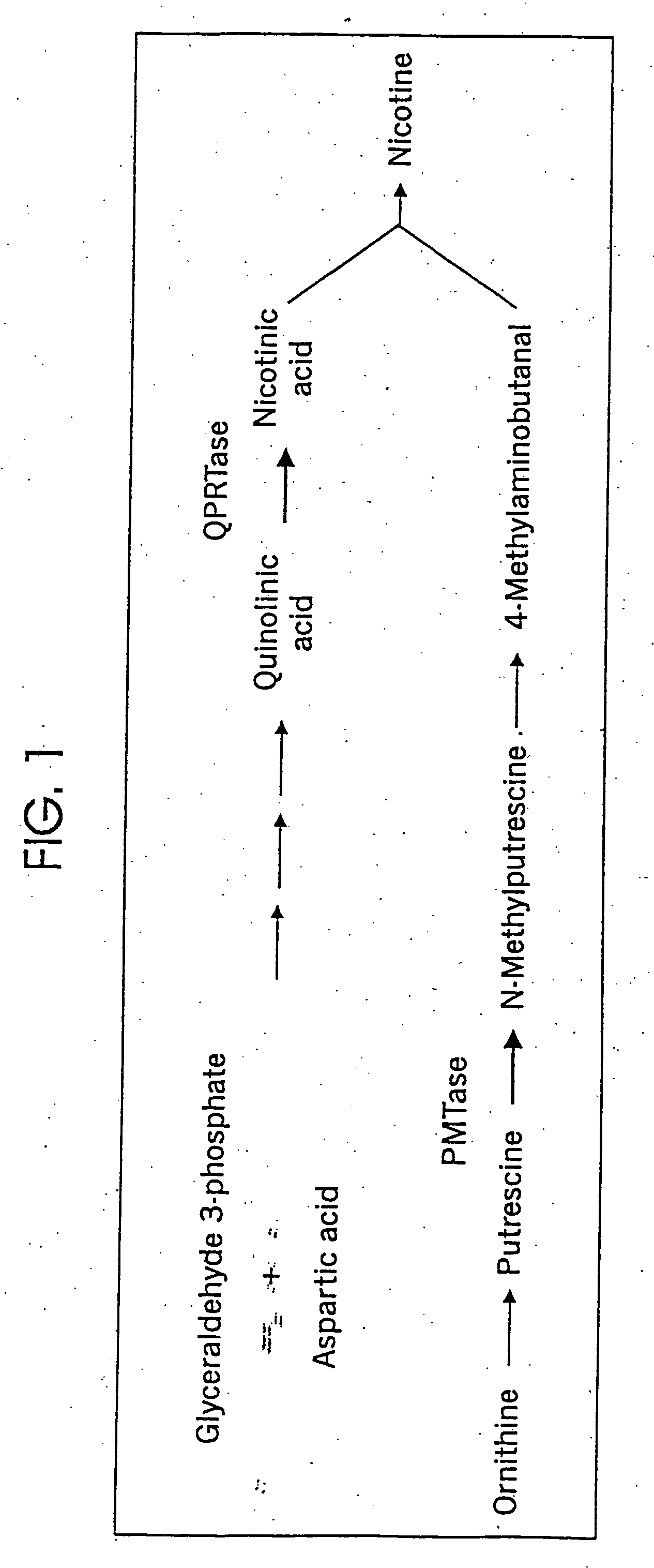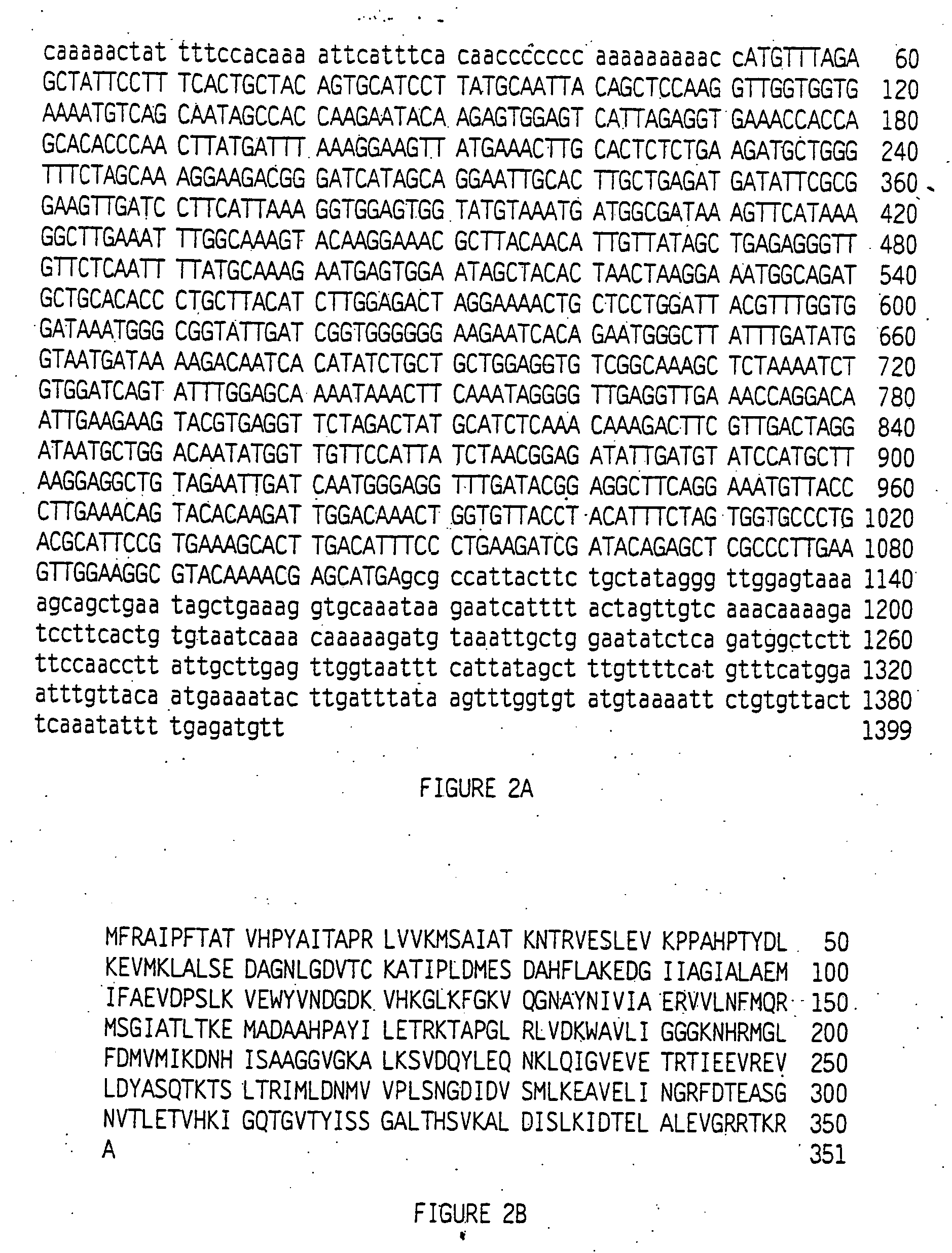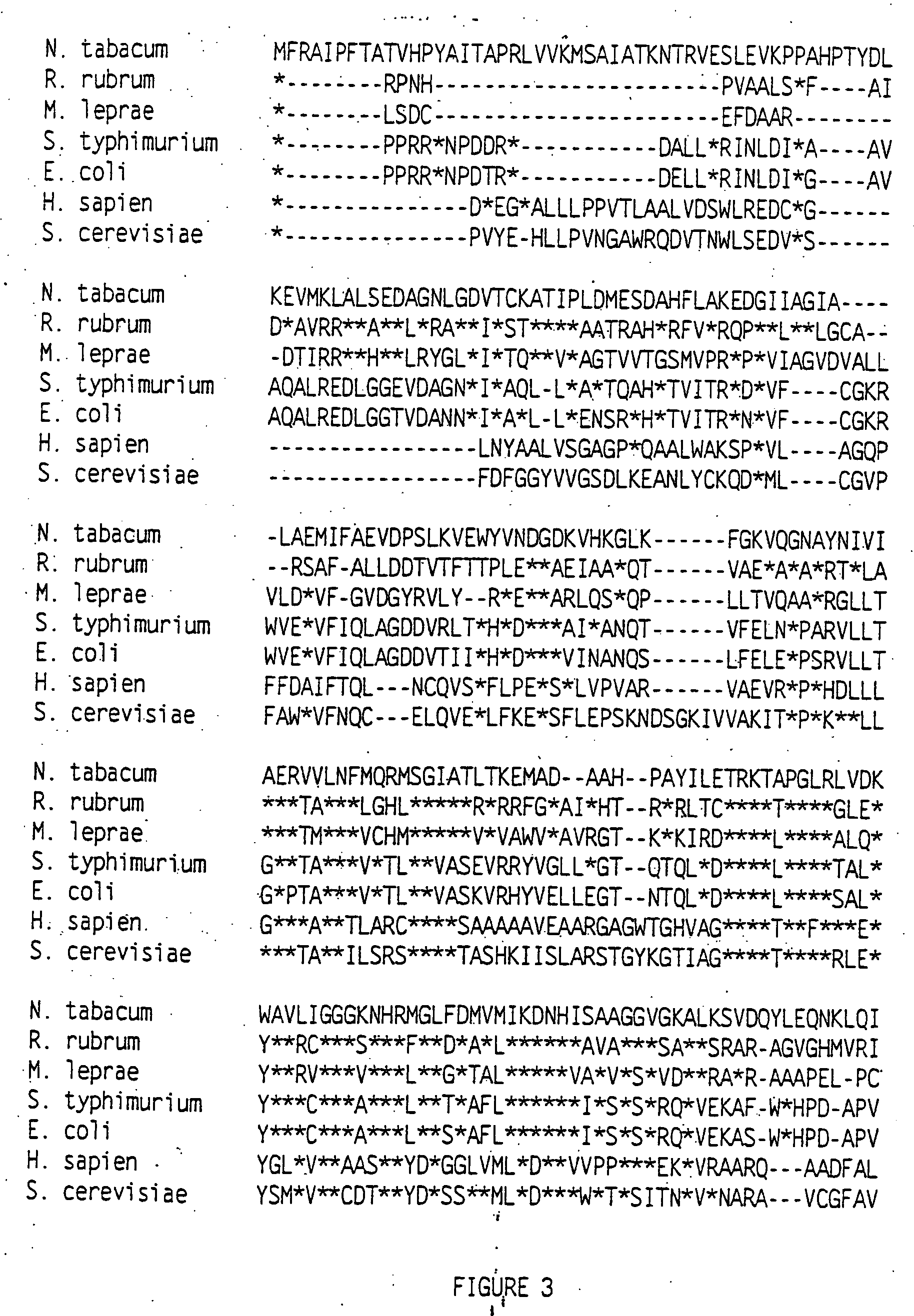Tobacco products with reduced nicotine
a technology quinolate phosphoribosyl, which is applied in the direction of transferases, tobacco, tobacco treatment, etc., can solve the problems of reducing the abundance of quinolate phosphoribosyl transferase, reducing the production of end products, and increasing the end product of the biosynthetic pathway. , to achieve the effect of reducing the expression of a quinola
- Summary
- Abstract
- Description
- Claims
- Application Information
AI Technical Summary
Benefits of technology
Problems solved by technology
Method used
Image
Examples
example 1
Isolation and Sequencing
[0078] TobRD2 cDNA (Conkling et al., Plant Phys. 93, 1203 (1990)) was sequenced and is provided herein as SEQ ID NO: 1, and the deduced amino acid sequence as SEQ ID No:2. The deduced amino acid sequence was predicted to be a cytosolic protein. Although plant QPTase genes have not been reported, comparisons of the NtPT1 amino acid sequence with the GenBank database (FIG. 3) revealed limited sequence similarity to certain bacterial and other proteins; quinolate phosphoribosyl transferase (QPRTase) activity has been demonstrated for the S. typhimurium, E. coli. and N tabacum genes. The NTQPT1 encoded QPTase has similarity to the deduced peptide fragment encoded by an Arabidopsis EST (expression sequence tag) sequence (Genbank Accession number F20096), which may represent part of an Arabidopsis QPTase gene.
example 2
In-Situ Hybridizations
[0079] To determine the spatial distribution of TobRD2 mRNA transcripts in the various tissues of the root, in situ hybridizations were performed in untransformed plants. In-situ hybridizations of antisense strand of TobRD2 to the TobRiD2 mRNA in root tissue was done using techniques as described in Meyerowitz, Plant Mol. Bid. Rep. 5,242 (1987) and Smith et al., Plant Mol. Biol. Rep. 5, 237 (1987). Seven day old tobacco (Nicotiana tabacum) seedling roots were fixed in phosphate-buffered glutaraldehyde, embedded in Paraplast Plus (Monoject Inc., St. Louis, Mo.) and sectioned at 8 mm thickness to obtain transverse as well as longitudinal sections. Antisense TobRD2 transcripts, synthesized in vitro in the presence of 355-ATP, were used as probes. The labeled RNA was hydrolyzed by alkaline treatment to yield 100 to 200 base mass average length prior to use.
[0080] Hybridizations were done in 50% formamide for 16 hours at 42° C., with approximately 5×106 counts-per...
example 3
TobRD2 mRNA Levels in Nic1 and Nic2 Tobacco Mutants and Correlation to Nicotine Levels
[0081] TobRD2 steady-state mRNA levels were examined in Nic1 and Nic2 mutant tobacco plants. Nic1 and Nic2 are known to regulate quinolate phosphoribosyl transferase activity and putrescence methyl-transferase activity, and are co-dominant regulators of nicotine production. The present results are illustrated in FIGS. 5A and 5B show that TobRD2 expression is regulated by Nic1 and Nic2.
[0082] RNA was isolated from the roots of wild-type Burley 21 tobacco plants (Nic1 / Nic1 Nic2 / Nic2); roots of Nic1− Burley 21 (nic1 / nic1 Nic2 / Nic2); roots of Nic2-Burley 21 (Nic1 / Nic1nic2 / nic2); and roots of Nic1Nic2-Burley 21 (nic1 / nic1 nic2 / nic2).
[0083] Four Burley 21 tobacco lines (nic) were grown from seed in soil for a month and transferred to hydroponic chambers in aerated nutrient solution in a greenhouse for one month. These lines were isogenic, except for the two low-nicotine loci, and had genotypes of Nic1...
PUM
| Property | Measurement | Unit |
|---|---|---|
| pH | aaaaa | aaaaa |
| thickness | aaaaa | aaaaa |
| nucleic acid | aaaaa | aaaaa |
Abstract
Description
Claims
Application Information
 Login to View More
Login to View More - R&D
- Intellectual Property
- Life Sciences
- Materials
- Tech Scout
- Unparalleled Data Quality
- Higher Quality Content
- 60% Fewer Hallucinations
Browse by: Latest US Patents, China's latest patents, Technical Efficacy Thesaurus, Application Domain, Technology Topic, Popular Technical Reports.
© 2025 PatSnap. All rights reserved.Legal|Privacy policy|Modern Slavery Act Transparency Statement|Sitemap|About US| Contact US: help@patsnap.com



